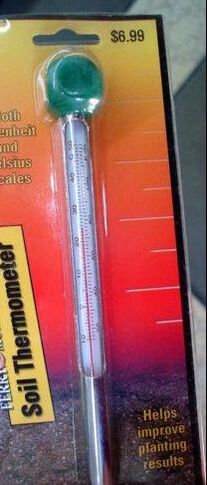Garden Stories
Garden.True.North is about gardening in Zone 4,
sharing thoughts, ideas and tips for all northern gardeners.
sharing thoughts, ideas and tips for all northern gardeners.
 Spring started this week which gets gardeners excited like kids anticipating Christmas. Except it is still way too early to start gardening. Even starting seeds is at most about 6 weeks before planting and we usually can not plant until late May. I’ve always thought the astrological seasons were off kilter; even meteorological seasons are too early for those in Zone 3. Yesterday we received about an inch of snow which is now melting on top of the foot of snowpack left from our winter that started before Thanksgiving (i.e. “fall”). What can a gardener rely on to determine the proper planting time? Not the calendar – as we all have noted, past year’s experiences are not a reliable indicator of future success. And the seasons are not the same across time zones or regions.
Not the advice on the seed package – Most seeds packages for vegetables that can be grown when it is colder offer this direction: “Direct sow outdoors as soon as the soils can be worked.” What the heck does that mean? If you can turn the soil and not hit a frost layer? But the soil might still be very cold and most seeds need a minimum temperature to germinate. Weather – Next week the forecast might be for temperatures above freezing but you only need to live in Wisconsin a short time to know this is just a teaser. And I love the directions on seed packages: “sow when all danger of frost is past” – what? That would be maybe July? Phenology – Now here is something that works. Mother Nature is very good at predicting planting time. Studies have been done for many generations on the common lilac as the indicator. Folk wisdom (i.e. Farmer’s Almanac) is mostly based on the science of phenology (def. “the study of cyclic and seasonal natural phenomena, especially in relation to climate and plant and animal life”). Here’s a few indicators that are useful for planting from an UW-Extension article:
Using lettuce as an example, the range for germination is 40-80⁰ with the optimum being 75⁰. Does it make sense to try to plant early? Vegetables such as beans need a range of 60-85⁰ for germination. Check out this handout for the optimal temperatures for common vegetable seed germination. A soil thermometer is a gardener’s best friend. A simple thermometer can be purchased for about $10, which I think is a good investment providing you with better germination and success in your garden.
0 Comments
Leave a Reply. |
Classes*Gardening in Small Spaces, April 30 at 5:00 pm Spooner Library, Spooner Archives
March 2024
Categories
All
|